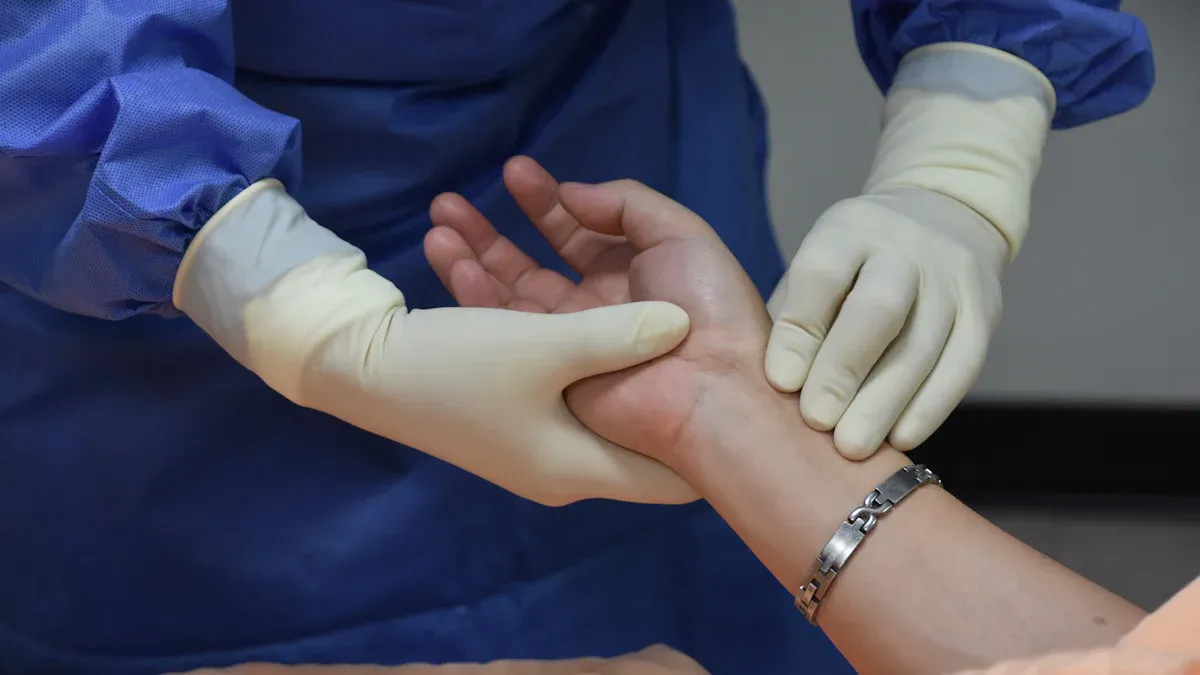How High-Strength Nitinol Tubing Enhances Neurovascular Stents

High-strength nitinol tubing for neurovascular applications has transformed modern medical procedures. Its remarkable flexibility and durability allow it to withstand the intricate and dynamic environment of blood vessels. With shape memory properties, nitinol tubing ensures precise deployment of stents, while its superelasticity adapts to constant vascular movement. Clinical studies have shown that nitinol can endure stress levels between 500 MPa and 900 MPa without losing its structural integrity. Additionally, minimal tissue reactions, with histological scores ranging from 0 to 1, highlight its biocompatibility. These attributes make nitinol tubing a trusted choice for FDA-approved neurovascular stents, ensuring patient safety and improved outcomes.
Key Takeaways
Nitinol tubing has special traits like shape memory and flexibility.
Its bendability helps stents fit tricky blood vessel paths safely.
Nitinol is safe for the body, causing fewer bad reactions.
Strong nitinol tubing handles heavy use, staying tough and reliable.
New science keeps making nitinol better for medical treatments.
Unique Properties of Nitinol Tubing

Nitinol tubing stands out in medical applications due to its exceptional properties. These include shape memory, superelasticity, and biocompatibility, which make it an ideal material for neurovascular stents. These unique characteristics not only enhance the performance of stents but also ensure patient safety and long-term reliability.
Shape Memory and Self-Expanding Stents
The shape memory effect of nitinol tubing is a game-changer for self-expanding stents. This property allows nitinol to return to its original shape after deformation when exposed to body temperature. This ensures precise deployment of stents in neurovascular procedures, even in challenging anatomical conditions.
Research highlights the role of advanced manufacturing processes in achieving this effect. For instance:
Tube hollows are processed to a final size of 10 × 0.457 mm, ensuring consistency in stent performance.
Variations in manufacturing methods can impact the fatigue life of nitinol tubing, emphasizing the importance of quality control.
Experimental studies further validate the benefits of nitinol's shape memory. Bench-top mechanical tests and finite element modeling (FEM) demonstrate how stents made from nitinol tubing adapt to arterial walls, reducing stress and improving mechanical performance. These findings underscore the critical role of nitinol in creating reliable self-expanding stents.
Superelasticity for Dynamic Adaptation
Superelasticity is another defining feature of nitinol tubing. This property enables nitinol stents to withstand significant deformation and recover their original shape without permanent damage. In neurovascular applications, this ensures that stents can adapt to the dynamic movements of blood vessels, maintaining their structural integrity over time.
Studies document nitinol's impressive elasticity, with a strain recovery of 5.62% and a recovery ratio of 98%. These attributes minimize the risk of mechanical failure under repetitive stress cycles, making nitinol tubing a robust choice for neurovascular stents. By reducing the likelihood of stent deformation or fracture, superelasticity enhances both the performance and longevity of stents.
Biocompatibility and Patient Safety
Biocompatibility is a critical factor in the success of medical implants, and nitinol tubing excels in this area. Its titanium oxide layer prevents rust and nickel release, ensuring safety during delicate neurovascular procedures. Clinical evidence supports this, showing no significant thrombosis or abnormalities in swine models.
Nitinol tubing's biocompatibility and corrosion resistance make it safe for implantation, with minimal risk of adverse reactions. This is crucial for neurovascular stents, where patient safety is paramount. By reducing the likelihood of complications, nitinol tubing contributes to better patient outcomes and faster recovery times.
AccuPath, a leading manufacturer of nitinol tubing, ensures that its products meet the highest standards of quality and performance. Through rigorous testing for biocompatibility and advanced manufacturing techniques, AccuPath delivers tubing that enhances the safety and effectiveness of neurovascular stents.
Enhancing Stent Performance with High-Strength Nitinol Tubing

Precision and Consistency in Placement
High-strength nitinol tubing plays a vital role in ensuring precision and consistency during stent placement. Its shape memory properties allow stents to expand accurately within blood vessels, adapting to the vessel's unique shape. This ensures optimal blood flow and reduces the risk of complications. The adaptability of nitinol tubing also enhances the precision of surgical instruments, making it indispensable in modern neurovascular applications.
Nitinol's superelasticity enables stents to conform to narrow or curved arteries without losing structural integrity.
The flexibility of nitinol tubing allows surgeons to navigate complex vascular pathways effectively.
Advanced manufacturing processes ensure consistent quality, further improving placement accuracy.
These features make nitinol tubing a reliable choice for neurovascular stents, where precision is critical for patient safety and successful outcomes.
Durability Against Pulsatile Stresses
Durability is a cornerstone of nitinol tubing's performance in neurovascular stents. The material's fatigue resistance and durability enable it to withstand the constant pulsatile stresses of blood flow. Nitinol stents endure up to 400 million cycles of arterial pressure, maintaining their structural integrity over time. This remarkable durability ensures long-term reliability in demanding neurovascular environments.
The purity of nitinol tubing also contributes to its durability. Quantitative measures, such as the volumetric hazard probability, highlight the material's ability to resist wear and tear. Heart valve frames made from nitinol must endure at least 600 million cardiac cycles, showcasing the material's exceptional fatigue resistance. These attributes make nitinol tubing an ideal choice for stents, where durability is essential for reducing complications and ensuring long-term success.
Flexibility for Complex Neurovascular Pathways
Navigating the intricate pathways of the neurovascular system requires stents with exceptional flexibility. Nitinol tubing excels in this area, offering the elasticity and adaptability needed for complex applications. Biomechanical tests validate its flexibility, with measurements such as an elastic modulus of 28 GPa and a Poisson’s ratio of 0.3. These properties allow nitinol stents to bend and flex without compromising their structural integrity.
Test Type | Measurement/Result |
|---|---|
Elastic Modulus | 28 GPa |
Poisson’s Ratio | 0.3 |
Tensile Strength | 100 MPa |
Flexibility of Solitaire FR | 0.38 ± 0.11 N |
Flexibility of Trevo XP ProVue | 0.91 ± 0.11 N |
Flexibility of Stent D | 0.59 ± 0.05 N |
The flexibility of nitinol tubing ensures that stents can navigate through narrow and curved arteries with ease. This reduces the risk of damage to blood vessels and enhances the overall success of neurovascular procedures. By combining flexibility with durability, nitinol tubing provides a robust solution for complex medical challenges.
Impact of Nitinol Tubing on Patient Outcomes
Minimizing Complications and Risks
Nitinol tubing significantly reduces complications in neurovascular treatments. Its biocompatibility ensures enhanced safety and reduced risks during minimally invasive procedures. The titanium oxide layer on nitinol prevents corrosion and nickel release, minimizing adverse reactions. This makes nitinol tubing ideal for patient-specific designs, especially in delicate neurovascular applications.
Clinical trials highlight the advantages of nitinol over traditional materials. The data below illustrates its impact:
Metric | Nitinol Devices | Traditional Materials |
|---|---|---|
Recovery Improvement | 20% | N/A |
Pain Level Reduction | Quicker recovery | N/A |
Risk of Complications | Lower | N/A |
The table demonstrates how nitinol tubing enhances safety and reduces risks compared to conventional materials. Its ability to adapt to dynamic vascular environments ensures reliable stent performance, lowering the likelihood of complications.
Faster Recovery and Healing
Minimally invasive procedures using nitinol tubing promote faster recovery and improved comfort for patients. The material’s flexibility allows stents to conform to complex vascular pathways, reducing trauma to surrounding tissues. This minimizes post-operative pain and accelerates healing.
Nitinol tubing’s superelasticity plays a crucial role in recovery. It enables stents to maintain their shape under pulsatile stresses, ensuring consistent blood flow. Patients benefit from shorter hospital stays and quicker returns to daily activities. By combining durability with adaptability, nitinol tubing supports faster recovery and improved outcomes in neurovascular applications.
Long-Term Success in Neurovascular Treatments
The long-term success of neurovascular treatments relies on the durability and reliability of stents. Nitinol tubing excels in both areas. Its fatigue resistance allows stents to endure millions of cardiac cycles without structural failure. This ensures sustained performance in minimally invasive surgical tools and neurovascular applications.
Patient-specific designs made from nitinol tubing further enhance outcomes. These designs adapt to individual anatomical variations, optimizing blood flow and reducing the risk of restenosis. The material’s corrosion resistance ensures long-term safety, making it a trusted choice for neurovascular stents.
The impact of nitinol tubing on patient outcomes is profound. By minimizing complications, promoting faster recovery, and ensuring long-term success, it revolutionizes neurovascular treatments. Its unique properties make it indispensable in modern medicine, driving advancements in minimally invasive procedures and improving lives.
Future of High-Strength Nitinol Tubing for Neurovascular Applications
Innovations in Stent Design and Functionality
Recent advancements in stent design have significantly improved the functionality of nitinol tubing in neurovascular applications. Additive manufacturing techniques now allow for the creation of innovative test specimens, enhancing the reliability of mechanical testing. These methods ensure that stents meet the rigorous demands of neurovascular environments. Computational modeling, such as finite element analysis, has also become a critical tool. It predicts stent performance under physiological conditions, enabling precise customization for patient-specific needs.
Biodegradable materials, including iron–manganese alloys, are emerging as promising alternatives for next-generation stents. These materials provide temporary support while degrading in a controlled manner, reducing the need for permanent implants. Clinical trials have validated the effectiveness of everolimus-eluting stents for complex interventions, further demonstrating the potential of advanced stent designs. These innovations highlight the evolving role of nitinol tubing in creating safer and more effective medical devices.
Expanding Use Cases in Medical Treatments
The versatility of nitinol tubing continues to drive its adoption across various medical applications. Self-expanding stents, heart valves, and other implants benefit from the unique properties of nitinol. Research has shown that nitinol tubing can be fabricated into wires, sheets, and tubes, offering flexibility in design and application. This adaptability makes it a preferred choice for developing custom nitinol tubing tailored to specific medical needs.
The growing prevalence of neurological disorders has increased the demand for neurovascular guidewires. Technological advancements in these guidewires enable surgeons to perform complex procedures with greater precision. The rising number of surgical procedures for neurological conditions further underscores the expanding role of nitinol tubing in modern medicine. These trends indicate a bright future for selecting the right nitinol tubing in diverse medical treatments.
Growth Factor | Description |
|---|---|
Increasing incidence of neurological disorders | The global prevalence of neurological disorders is rising significantly due to lifestyle changes, an aging population, and pollution, which is expected to increase demand for neurovascular guidewires. |
Technological advancements in guidewires | Innovations in neurovascular guidewires enable surgeons to perform complex procedures more effectively, leading to greater adoption and market growth. |
Growing number of surgical procedures | The rise in surgical procedures for neurological disorders, driven by new technologies and therapies, is anticipated to boost the demand for neurovascular guidewires in the coming years. |
Advancements in Material Science for Enhanced Performance
Material science continues to push the boundaries of nitinol tubing performance. Researchers have optimized nitinol's shape memory effect and superelasticity, resulting in improved mechanical strength and ductility. The addition of ternary and quaternary elements has expanded its capabilities, allowing for higher operating temperatures and larger transformation strains. These advancements make nitinol tubing more reliable in demanding neurovascular applications.
Thermal shape-setting techniques have also seen significant improvements. These innovations enhance the precision and repeatability of manufacturing processes, ensuring that nitinol tubing meets the highest standards of fda compliance and medical-grade certification. By leveraging these advancements, manufacturers can produce nitinol tubing that offers unparalleled performance and safety. This progress underscores the importance of material science in shaping the future of nitinol-based medical devices.
High-strength nitinol tubing has redefined the performance of neurovascular stents by combining flexibility, durability, and biocompatibility. These attributes ensure safer procedures and better patient outcomes. The material's unmatched adaptability allows stents to navigate intricate vascular systems, while its superior fatigue resistance guarantees long-term reliability. Clinical assessments confirm its ability to minimize adverse reactions, enhancing safety for extended use.
Property | Description |
|---|---|
Flexibility | Nitinol tubing offers unmatched flexibility and adaptability, crucial for navigating complex vascular systems. |
Durability | Demonstrates superior fatigue resistance with a high-cycle fatigue limit, ensuring long-term reliability. |
Biocompatibility | Clinical assessments confirm its ability to minimize adverse reactions, enhancing safety in long-term use. |
Advancements in material science continue to expand the potential of nitinol tubing, paving the way for innovative neurovascular applications. This progress promises to improve lives and revolutionize medical treatments.
FAQ
What makes nitinol tubing unique for neurovascular stents?
Nitinol tubing offers shape memory, superelasticity, and biocompatibility. These properties ensure precise stent placement, adaptability to blood vessel movements, and minimal adverse reactions. Its durability also supports long-term success in neurovascular treatments.
How does nitinol tubing improve patient outcomes?
Nitinol tubing reduces complications, promotes faster recovery, and ensures long-term reliability. Its flexibility minimizes trauma during procedures, while its durability supports consistent blood flow. These features enable customized treatment options for better patient care.
Can nitinol tubing be used in other medical fields?
Yes, nitinol tubing has applications in cardiovascular care, orthopedic implants, and minimally invasive surgeries. Its adaptability and durability make it suitable for various medical devices, including heart valves and guidewires.
Is nitinol tubing safe for implantation?
Nitinol tubing is highly biocompatible. Its titanium oxide layer prevents corrosion and nickel release, reducing the risk of adverse reactions. Clinical studies confirm its safety for long-term use in neurovascular and other medical applications.
What advancements are expected in nitinol tubing technology?
Future advancements include improved material strength, biodegradable stents, and enhanced manufacturing techniques. These innovations aim to expand its applications and improve performance in both neurovascular and cardiovascular treatments.
See Also
The Importance of Nitinol Tubing in Modern Medicine
Nitinol Tubing's Contribution to Medical Technology Innovations
Nitinol Tubing's Impact on the Future of Medical Devices
Nitinol Tubing: Key to Successful Minimally Invasive Surgery

